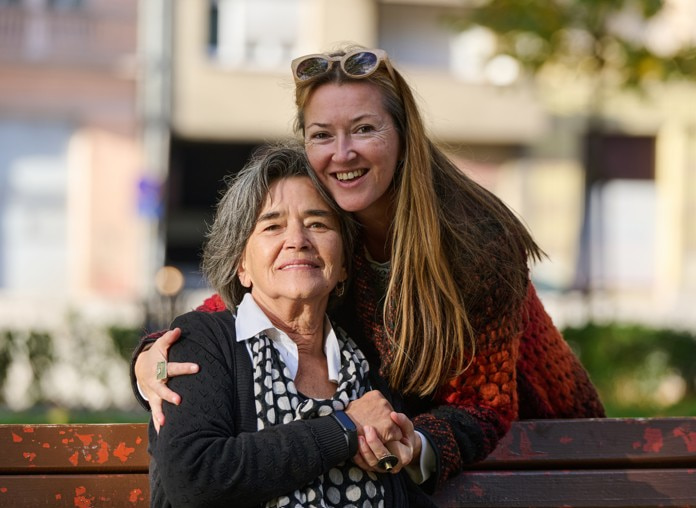When families begin considering senior living, questions naturally arise: How can I help my parent feel at home? What makes the adjustment easier? How long does it usually take to adapt? These are some of the most common concerns adult children face when supporting a loved one through such an important change. Understanding the emotional, social, and practical aspects of the transition can make the journey smoother for both your parent and your family.
1. Helping Your Parent Embrace Change
Noticing Silent Fears
The signals often speak louder than words:
- A longer pause before answering simple questions.
- Looking at familiar objects with a quiet sense of nostalgia.
- Asking repeatedly, “When am I going back home?”
Tip: Instead of rushing to reassure, try asking gently: “What worries you the most right now?” This creates space for honesty and trust.
Balancing Autonomy and Care
Ways to support without taking over:
- Offer small choices: “Would you like breakfast in the dining room or your room today?”
- Honor personal rituals: that morning coffee at the same time, or a favorite evening book.
- Invite their input: let them decide on room décor or which community activities to explore first.
The Language of Everyday Gestures
Small actions that build the strongest bridges:
- Place a framed family photo on their new nightstand.
- Share an inside joke or a memory that always makes them laugh.
- Take a quiet walk together, hand in hand, to remind them that change doesn’t erase love.
Remember: What your parent will treasure most are not speeches or explanations, but how you made them feel in the simplest of moments.

2. Guiding Your Parent Through Senior Living
True guidance means walking beside your parent, helping them discover a sense of belonging in a new place.
Creating Rituals of Continuity
Ways to bring familiarity into the new setting:
- Place their favorite blanket or quilt on the bed.
- Keep mealtimes similar to what they followed at home.
- Play familiar music during the first days to create a sense of calm.
- Encourage them to bring small keepsakes, like a favorite mug or framed artwork.
These rituals remind your parent that home is carried in habits, not just in walls.
Inviting Connection, Gently
How to open space for new relationships without pressure:
- Introduce them to one neighbor at a time instead of a large group.
- Encourage participation in one activity they already enjoy (like gardening or bingo).
- Join them for the first few community events to ease the transition.
- Celebrate small social moments—sharing a smile or a short chat with a new friend.
Friendships bloom more easily when they are offered as an invitation, not a demand.
Reassurance Through Presence
Why your steady presence becomes their anchor:
- Schedule consistent visiting days so they know when to expect you.
- Leave little notes or photos for them to find between visits.
- Stay calm when they feel disoriented—your composure helps ground them.
- Remind them through actions, not just words, that they are not alone in this change.
Consistency builds trust, and trust softens the weight of uncertainty.
3. Daily Anchors That Create Stability
Step 1: Transforming a Room into a Personal Map
People expect furniture and photos, but what truly matters is multi-sensory continuity:
- Textures: The same quilt they’ve used for years, a favorite pillow, or even a specific chair cover can recreate comfort faster than new décor.
- Smells: Lavender, cinnamon, or the scent of a familiar soap can instantly transport someone back to a safe memory.
- Lighting: Adjusting light to match the rhythm of home (dim lights before bedtime, morning light near the window) reduces anxiety and improves sleep.
- Sound cues: A radio station or playlist that always played at home can help the brain feel “oriented.”
💡 Unexpected insight: Seniors with memory changes often respond more strongly to smell and sound than sight when building familiarity.
Step 2: Supporting Health Without Making It Clinical
Medication and meals are expected, but the art is in making routines human, not medicalized:
- Create rituals around medicine: Pair pills with a favorite tea or a small piece of chocolate to turn obligation into comfort.
- Hydration reminders: Many seniors forget to drink water. Use fruit-infused water, herbal teas, or colorful cups to make it inviting.
- Movement micro-moments: Instead of formal exercise, anchor movement into routines—stretching while brushing teeth, walking while listening to music, or standing during a phone call.
- Sleep hygiene: Small habits like warm socks, soft lighting, or a bedtime story podcast can regulate rest without medication.
💡 Unexpected insight: Maintaining body rhythm (hydration, light, sleep cycles) has as much impact on mood and orientation as medication itself.
Step 3: Turning Activities into Gentle Invitations
Participation doesn’t have to mean forcing group activities:
- Start with observation: Let them watch a group game before joining—it reduces performance anxiety.
- Micro-participation: Folding napkins at dinner, watering one plant, or stirring soup in the kitchen can create a sense of purpose.
- Family co-participation: Try activities where you join them—painting together, doing puzzles, or listening to music—so the transition feels less intimidating.
- Celebrate small starts: A smile shared during bingo can be as valuable as winning the game.
💡 Unexpected insight: Purpose-driven micro-activities (like helping set a table) can reduce depression more effectively than passive entertainment.
4. The Family’s Role in Shared Resilience
Redefining Progress
Families often expect quick adaptation, but the process is rarely linear. Some days your parent may seem settled, and the next day they might express a desire to “go back home.” This doesn’t mean failure—it’s part of the adjustment cycle.
👉 Practical guidance:
- Think of progress in weeks and months, not days.
- Track small indicators: eating more comfortably in the dining hall, remembering staff names, showing curiosity about an activity.
- These “micro-milestones” are signs that resilience is developing quietly, even if the bigger picture feels slow.
Caring for the Caregiver
A common mistake is to believe only the senior is in transition. In reality, adult children experience their own stress, guilt, and uncertainty. If this emotional load is ignored, families burn out—and that tension is felt by the parent.
👉 Practical guidance:
- Establish a personal ritual of care after visits (a walk, journaling, or even talking with a sibling).
- Share responsibilities among family members instead of leaving them to one person.
- Join caregiver support groups; hearing other families’ stories provides relief and perspective.
💡 Why it matters: Studies show that when caregivers reduce stress, their parents show lower anxiety and better adaptation. Emotional states are contagious.
Celebrating Micro-Milestones
Families often look for “big wins,” like seeing their parent suddenly thrive. But resilience is built through tiny victories. A smile in the dining room, a short conversation with a neighbor, or joining an activity for five minutes—these are proof of adaptation in motion.
👉 Practical guidance:
- Mark these moments, even symbolically—bring flowers, take a photo, or simply say, “I’m proud you tried this today.”
- Encourage your parent to notice their own progress: “You’ve made a new friend already, did you realize that?”
💡 Why it matters: Celebrating small steps creates positive reinforcement in the brain, releasing dopamine and oxytocin, which strengthen the emotional loop between parent and family.
Transforming Guilt Into Presence
Many adult children carry guilt: “Did I abandon them? Should I be visiting more often?” This guilt, if left unchecked, can make visits heavy and emotionally draining. The truth is, senior living isn’t about absence—it’s about creating new forms of presence.
👉 Practical guidance:
- Focus on quality, not quantity. A 30-minute visit of full attention is more meaningful than three distracted hours.
- Bring elements of family continuity: stories, old recipes, photo albums, or favorite books.
- Allow silence. Sitting together without rushing conversation can be profoundly reassuring.
💡 Why it matters: Storytelling and quiet connection lower stress hormones, transforming visits into experiences of calm and joy rather than duty.





